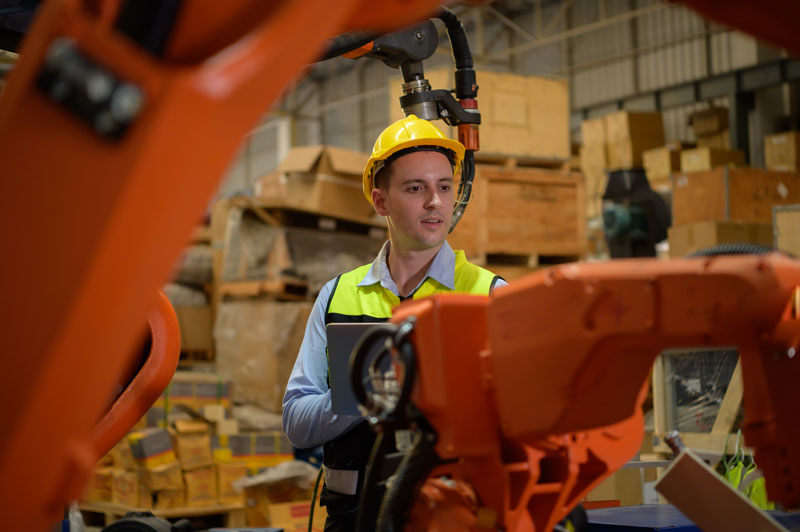Controlling costs is one of the most important factors in successful manufacturing. Manufacturing costs can quickly spiral out of control if you don’t take the right steps to keep them at a reasonable level.
Fortunately, there are many ways to lower production costs and avoid overspending in manufacturing. Using a combination of technological, practical, and strategic methods, you can reduce your manufacturing costs and redirect the money you save elsewhere.
Whether you are manufacturing your own products or acting as an outsourced manufacturer for your clients, you can benefit from reducing manufacturing costs. So where should you start if you want to reduce production costs? Use this guide to find out some of the best ways of cutting costs.
Design for the Manufacturing Process
If your company is responsible for both the design and production of the finished product, the design process is a crucial place to start to reduce manufacturing costs. The right design can reduce costs incurred in a number of ways, from lowering the number of parts that you need to using low-cost manufacturing techniques.
Fewer parts
You can start by minimizing the number of parts in your design. Fewer parts mean that your product is easier to put together, reducing the time required and helping you save money. Off-the-shelf parts will use fewer resources too.
Affordable material costs
Designing a product that uses affordable materials is another way to save. Your materials costs are a significant factor in manufacturing your products. Lower your direct material costs by looking at the machinability of your raw materials and comparing available materials to determine which are best.
Usability
Consider how your product will be used too. You might want to ensure your product has as much usability as possible, but this could be a waste of money if the user doesn’t actually use all of those features. Designing for affordability makes sense over designing for maximum performance.

Use Automation to Lower Production Costs
Technology can help to speed up the production process and reduce total manufacturing costs in several ways. Automating processes is something that can benefit any industry, sector, or business activity, but it’s especially useful in manufacturing.
Automation can be employed through the use of software, sensors, smart devices, machine learning, and more to bring down your manufacturing cost. You can save money on direct labor costs using automation and help to make your employees more productive by ensuring they’re not kept busy doing repetitive tasks.
Automation can increase productivity, reduce waste, help you manage inventory, and overall lower the cost of production. It can also reduce unscheduled downtime and it can be used for quality control. Automated quality control can move much faster than manual inspections, saving time and money.
Real-time data
Real-time data acquisition, recording, and visualization is one of the best ways to harness the power of automation. You can get a clearer idea of overhead costs, energy costs, labor costs, and more when you automate the collection of data on your machines, processes, and staff.
OEE (overall equipment effectiveness) software is just one of the tools that businesses can use to automate the collection and presentation of data, start making their manufacturing operations more effective, and increase their profit margins by reducing costs.
PerformOEE™ can turn your factory into a smart factory. This action alone could be a key factor in saving money on your production line. You can get a clear, insightful look at your manufacturing processes to reduce manufacturing costs through improved efficiency, effectiveness, and productivity.
Reducing Manufacturing Costs By Boosting Productivity
The productivity of both your machines and your staff are crucial factors to consider if you want to cut manufacturing costs. Automation is one way to improve productivity, and real-time data on your machines and the people working with them can provide you with valuable insights.
There are also various other ways you could make your factory more productive. OEE software is one of the best ways you can identify methods for improving machine productivity and reducing downtime. It can also help you to separate human factors from machines. However, there are also other ways to look at the productivity of your staff.
For example, consider how to improve productivity in manufacturing by reviewing your existing workflow. Can you improve the skills of the people working on your factory floor? Are there ways to improve the processes that are currently in place to help make everyone work more productively? Perhaps there are ways that technology can help people to work smarter, such as by providing managers with tablets for moving around the shop floor.
Providing training and education for your employees is another essential way to drive productivity. When your staff is knowledgeable and up-to-date on the best ways to do their work, they are empowered to work smarter and get better results.
Of course, employees also want to be treated well in other ways, from receiving a good compensation package to knowing that they are safe at work.

Reduce Labor Costs
The cost of labor is obviously a significant amount of total costs for any manufacturing business. You need your staff to keep everything going, and treating them well can certainly help you to produce good results. However, that doesn’t mean you can’t find ways to reduce your costs where labor is concerned.
Schedule smartly
Try to avoid over-scheduling staff too. Scheduling software will help you to properly schedule your staff and avoid having people turning up for shifts when they don’t really need to be there.
Use Lean Manufacturing Techniques
Implementing lean manufacturing principles could help to reduce manufacturing costs in several ways. It could increase productivity, reduce inventories, and help to eliminate waste, among other things. If you want to use lean techniques, you need to work out how to do more with less. Reducing waste is one of the best ways you can achieve this.
Waste includes any activity that’s not adding value when you look at it from the customer’s perspective. Fortunately, most manufacturing companies are able to find ways to use lean manufacturing methods.
You can begin by exploring the different forms of waste and how to remove them. There are many different forms of waste, including waiting times, over-production, and even talent waste among your staff.
Produce Standard Products
A great way for many manufacturers to reduce costs is by having standard products that can be easily and quickly built to order or customized. Having standard products that can be built to order means there is no need to have forecasts or inventory.
Products are built as orders come in. This reduces or can even completely eliminate the inventory carrying cost, which saves a lot of money, and procurement costs can be reduced too. Another positive consequence may be more sales when using this approach.
Standardizing parts can have similar benefits. When standardizing parts, it makes it easier to find and use them. Costs from raw materials and parts can be lowered and floor space can be saved through easier storage and organization of the required parts. Time savings translate to cost savings. Other standardization types are available too, from tools to processes.
Make Supply Chain Management Simpler
Simpler supply chain management can bring down manufacturing costs. One of the ways to do this is to use standard parts, which makes it easier to set up a steady supply, but there are also other methods that manufacturing companies can use.
Creating good relationships with current suppliers and new vendors can help to ensure you get the best prices on parts and products. Vendors can even work with you on product design and recommend the best parts that will be easily available. Simplifying supply chain management improves processes and reduces costs.

Reduce Overhead Costs
Any business needs to think about overhead costs as part of a strategy to reduce manufacturing costs. This can include looking at how to lower rent, reduce energy costs, save on insurance costs, and spend less on maintenance.
Take a look at maintenance costs
Keeping all of your equipment maintained is a must, but it can get pricey. One thing to remember is that your maintenance budget is often better spent on preventive maintenance, rather than on fixing things when they break down.
Not only will it help to reduce manufacturing overheads, but it will also help to reduce downtime. Using sensors to monitor equipment can make it easier to determine the best and most effective times to carry out maintenance.
PerformOEE™ integrates with many of the leading CMMS platforms on offer & can assist to raise work orders. PerformOEE™ can also deliver first-line intervention tips & techniques that empower the operator to get the machine or line back running quickly without the need to call Maintenance.
Reduce energy consumption
Manufacturing businesses naturally use a lot of energy to keep their equipment running and the lights on. But you could be racking up unnecessary costs if you’re spending more on energy consumption than necessary. There are various ways to reduce energy usage and costs and therefore reduce costs across the whole manufacturing process.
Some of the highest costs may be heating and lighting. It might seem difficult to envision how to save on these costs when you need to keep your business running, but there are opportunities to save. Manufacturing spaces often have high ceilings, large doors left open, and other features that can make heating them costly. Making some changes can address these problems and make it easier to heat any space.
It’s also important to avoid overheating or over-cooling a space, which can be a waste of money. Adjusting the temperature to a comfortable, safe figure should help to save on energy.
When it comes to lighting, you can save a lot of energy and costs related to it by switching it off more often. Do you have lights on when there’s no one in a room or manufacturing space that needs them?
Switching to low-energy lighting will also help, and you can maximize natural light so that your business is less reliant on lighting. Keeping windows and lighting fixtures clean will help to improve lighting while also keeping your business looking smart.
There are also ways to save energy on your use of equipment, but the right methods will depend on the type of equipment. However, good maintenance can help to reduce the energy used in your production line for all types of equipment.
Lower office and warehouse costs
It’s worth thinking about how you can reduce costs such as administrative expenses, office supplies, and warehouse costs when reducing manufacturing costs. This could include a variety of miscellaneous expenses that could be addressed to help manufacturing businesses lower overall costs. Even if only small changes can be made, they can add up and lead to greater cost savings.
There are many different ways to reduce manufacturing costs using technology and various strategies. When you reduce costs in manufacturing, you can increase profits and redirect the savings you make elsewhere.
